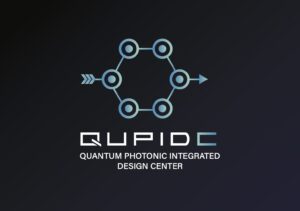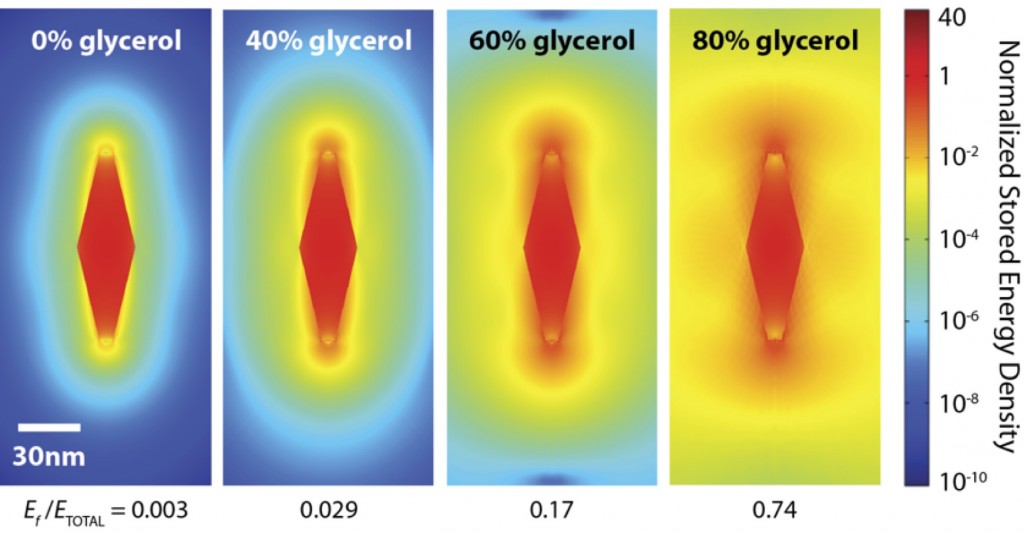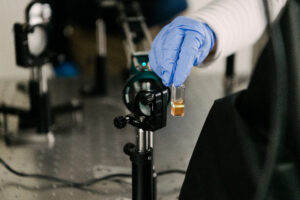Current projects
IMOD – NSF Center for Integration of Modern Optoelectronic Materials on Demand
IMOD brings together researchers from 11 universities to transform conventional and quantum optoelectronics through the development of atomically-precise semiconductor materials and scalable manufacturing processes, and to educate a diverse generation of scientists and engineering through convergent and interdisciplinary team-based collaboration. The Pelton group is working on coupling individual semiconductor nanocrystals to plasmonic nanostructures towards the generation of indistinguishable single photons, single-photon nonlinearities, and quantum sensing at room temperature.
QuPIDC: Quantum Photonic Integrated Design Center (a DOE Energy Frontier Research Center)
The mission of QuPIDC is to discover, design, and realize robust many-body entangled photon and matter states through multi-scale co-design strategies in heterogeneous solid-state photonic systems. The Pelton group is working on developing and characterizing the generation of multi-photon quantum states by integrating novel quantum emitters into plasmonic nanostructures.
UMBC Quantum Science Institute
The mission of the QSI at UMBC is centered on two core themes: (1) Research: A science-first approach to quantum technology development that emphasizes cutting-edge research, and (2) Education: An emphasis on growing and diversifying the quantum-ready workforce.
Picocavity-QED: A New Materials Platform for Room-Temperature Control of Quantum Coherence
In collaboration with the University of Colorado and Texas A&M University, we aim to tune and control molecular electronic and vibrational degrees of freedom when coupled to plasmonic picocavities.
Single Luminescent Defects in Silicon
In collaboration with the National Institute of Standards and Technology, we are researching the emission of photons by individual defects in silicon and the ability to enhance this emission using plasmonic and photonic cavities, towards the development of on-chip integrated quantum light sources.
Revealing the Complex Fluid Dynamics of Conventional Liquids Using Vibrating Nanoparticles
Ultrafast laser pulses can be used to excite and monitor mechanical vibrations of plasmonic metal nanoparticles with frequencies in the GHz – THz range and with amplitudes in the Ângström range. When the particles are suspended in liquid, the vibrations serve as a probe of the fluid dynamics of the surrounding liquid and the properties of the solid-liquid interface at ultrafast time scales and ultrashort length scales. In this way, we have uncovered complex phenomena in simple liquids, including viscoelasticity in small-molecule liquids and slip on the single-nanometer length scale.
Capabilities
Transient-absorption spectroscopy
Broadly tunable 100-fs, 2-kHz pump pulses (based on Spectra-Physics Spitfire Pro amplified Ti:Sapphire system and TOPAS optical parametric amplifier); broadband visible / NIR probe; delay times up to 3 ns; automated data acquisition using Ultrafast Systems HELIOS system.
Single-particle microscopy
Home-built system for dark-field scattering and luminescence spectroscopy of single particles: excitation with ~50-ps pulsed diode lasers at 420 nm and 510 nm (PicoQuant LDH, also operable cw) or a femtosecond Ti:Sapphire laser (KMLabs), time-correlated single-photon counting with < 30 ps timing resolution and autocorrelation capability (PicoQuant PicoHarp 300 electronics and MPD PDM single-photon counting avalanche photodiodes), grating spectrometer with back-illuminated CCD detector (Princeton Instruments PIXIS), sample positioning with 50 mm travel and ~50 nm repeatability (Alio integrated XY linear stage).






